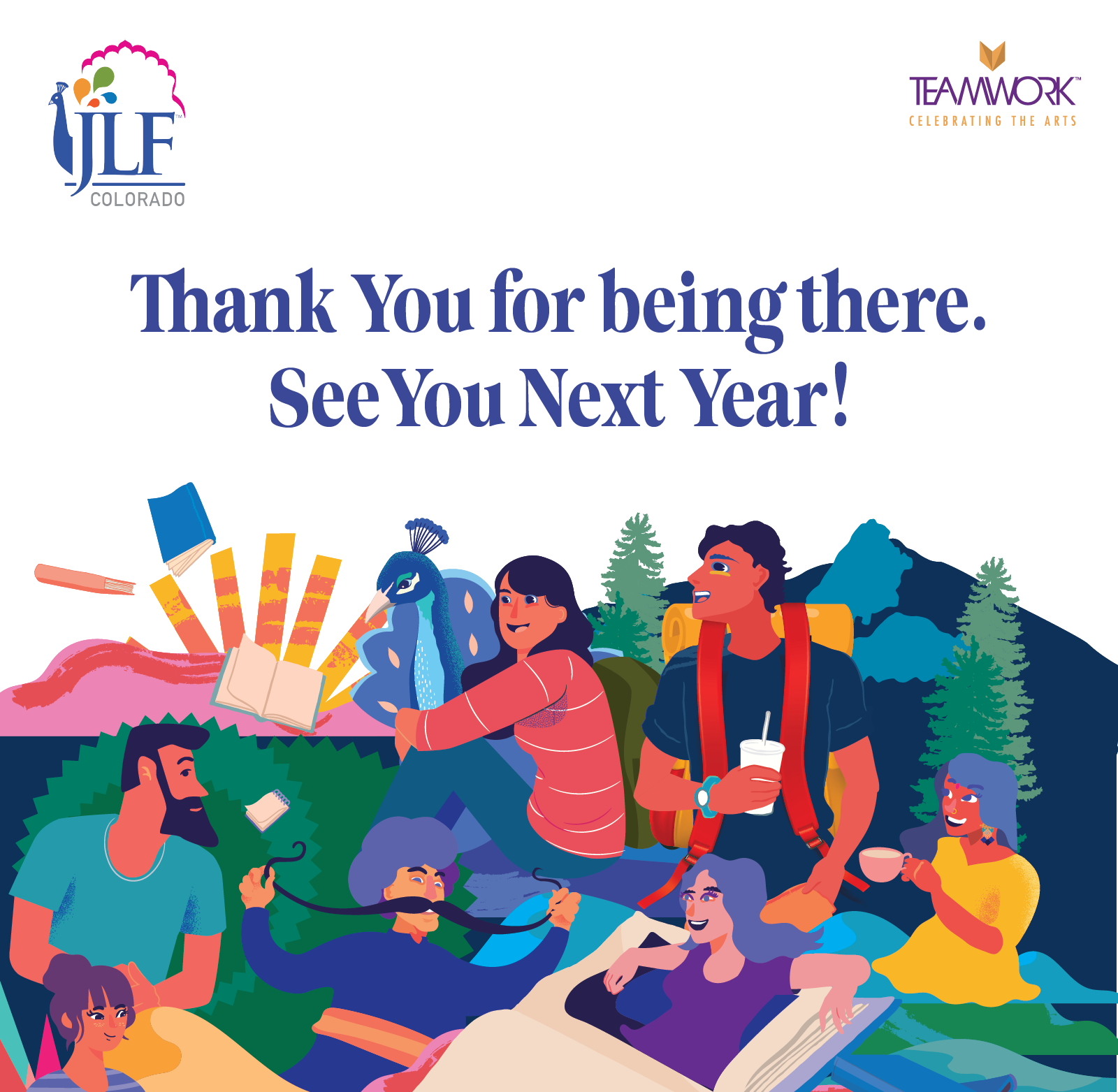


MEDITATIONS ON CREATIVITY
“Expressing your Highest Self without Effort, that’s what creativity is!â€
Tenzin Wangyal Rinpoche, founder and spiritual director of Ligmincha International, explores the canvas of creativity with Andrew Schelling, poet, essay writer, translator and teacher at Naropa University, Boulder, with clarity and ease, at JLF Colorado in Boulder.
Andrew presents the prevailing view that access to creativity comes from struggle and turbulence, disruption and conflict, tapping at times into mythology, talking about a certain “wildness†and also, perhaps even misbehaviour to an extent. Tenzin is completely opposed to this view, saying that creativity is not something we create outside of ourselves but more the way we live everyday. “Life is Art. Art is my work.â€
A meditation master in the Bön Buddhist tradition of Tibet with students in more than twenty-five countries, Tenzin speaks to Andrew about his recent book Spontaneous Creativity: Meditations for Manifesting Your Positive Qualities.
For Tenzin, ‘spontaneous creativity’ is TAO, a dynamic energy that connects the sacred space within us to the underlying natural order of the universe - the source of infinite potential, love, compassion, and joy. When we tap into this source we are alive, free and excited about whatever activity we are expressing ourselves through, which then becomes effortless. Any voice that emerges from this core has the power to heal us and benefit others. If, however, you hate what you are doing, there is not enough energy to motivate you to tap into your creative sources and that is when effort comes in.
Tenzin takes us through the “3 Jewelsâ€- the 3 doors of meditation through which we can “enter†as well as “exitâ€:
-
Stillness of Body
-
Silence of Speech
-
Spaciousness of Mind
Most of us use these doors to exit when actually we need to go more inward, towards greater stillness and depth. Silence is not an absence of noise and sound but a presence of awareness from where one’s creativity comes. When our hearts are open, there is space for boundless love, joy and equanimity to flow. Expectation and effort occupy much space that obscures the natural flow of these energies; so it is best to push these out and still the internal chatter.
“Pain is the outcome of disconnectionâ€. Tenzin takes us through the recognition and release of our “pain identity†that holds us back – our ‘pain body, pain speech and pain mind’ and the distinct “pills†that he introduces for us to meditate with:
-
The White Pill for pain body, the physical manifestation of blockages and contractions, guides us to use our breath to slowly exhale the tightness in our body and create more empty spaces within, so that “the light of awareness is active in my bodyâ€.
-
The Red Pill for pain speech helps us become more restful and reflective, less judgmental and more accommodating of others as we “keep smiling and enjoy the melody of silenceâ€.
-
The blue pill for Pain Mind points us towards recognizing our own anger, hurt, disappointment as well as the emotions of others, so that we begin the process of healing and release, making space within our hearts for love and joy to arise.
“We are not trying to get rid of ignorance; we are just trying to give it a rest.â€
The conversation is peppered with gems of wisdom from Tenzin who speaks about meditation practices that separate the “dark from the luminous selfâ€, saying that we have all these aspects within ourselves since we are in “Samsara†and not born in a perfect place. Our dark side too can be an equally creative expression of ourselves depending on how skilful and compassionate the articulation is. Tenzin does not reject pain. Instead he welcomes it saying that pain is an indicator that “your wound is breathing. It’s coming alive!†And when we are able to give a “spacious, luminous, warm hug†to our pain, we help reduce and sometimes even release it.
Spontaneous creativity is part of every aspect of our lives – from relationships, to family, our work and every other expression. Infusing these with lightness and play brings comfort that enables us to be more open and caring towards others and step out to serve them with ease. We don’t need to compete to be the best but rather find our own ‘voice’ through awareness and practice.
Is the end goal of creativity and art only fame and money? Tenzin speaks of freedom and liberation from ego-gratification as we become aware of our “true placeâ€, our sense of completeness as we draw “ceaseless energy from boundless spaceâ€, so as to express our creative gifts for the greatest good. He emphasizes the urgency of changing our relationship with nature, “honouring†her more than just using her, to enable a shift in the imbalance of climate change.
Our challenge today is to come up with a new form of creativity, one that is more harmonious and less divisive, through which we can be “a little more responsible, more empathetic, more open and connect with othersâ€. This would greatly help relieve the collective Pain Body we are all a part of. Responding to a question on substance abuse, Tenzin called addiction “a sense of longing of recognition of self. I am lost. Who am I? The addiction helps in ignoring the pain to find myself.â€
An illuminating session that sheds light on the ancient wisdom of Bön Buddhist practices, opening up the possibility of one’s own growth: the insight of creativity as being a dynamic force that animates and connects us all with every being on the planet, is challenging and exhilarating at the same time.



Leave a comment